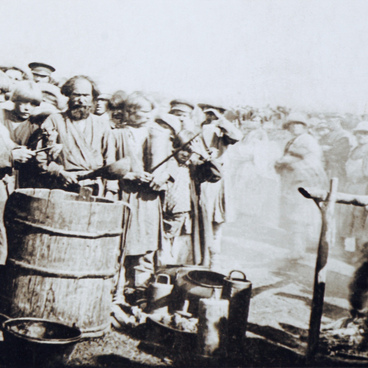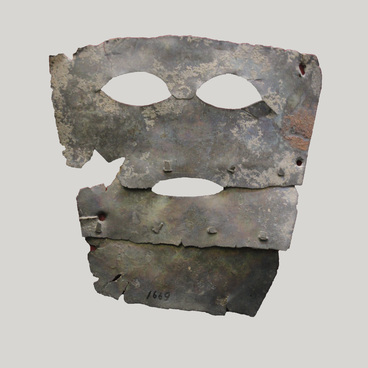Printed fabric is any cloth that has a pattern on its surface. The name comes from an ancient technique, when a pattern was stamped on the cloth using wooden stencil boards. The dye was applied to the board, which was then placed on the fabric with the pattern downward and pressed with a special mallet. The dye absorbed well and the colored patterns appeared on the fabric.
A different technology involved a stencil to apply a special solution, vapa, to a white cloth, and then dipping the item into a vat with dyes. Copper sulfate, contained in vapa, protected the pattern from pigment and the design preserved its light color. The printing craft originated in India and then spread all over Europe. In Russia it survived until the 1930s, distinguished by a great variety of patterns and vibrancy of colors.
The Komi-Permyak Local History Museum named after Pyotr Ivanovich Subbotin-Permyak has a unique collection of woodblocks for textile printing, collected by the founder of the museum. More than 300 exhibits present the dyeing industry of the Perm Governorate of the 18th–20th centuries. The collection includes woodblocks, dubas sarafans, skirts, samples of printed canvases, linings of headdresses and outer garments. The six albums, compiled by Subbotin-Permyak, describe the symbolism and purpose of more than half a thousand patterns of woodblocks.
Woodblock printing is one of the few crafts that reached beyond one household. Artisans made and decorated fabrics for the whole village, sold them at fairs and bought woodblocks with new designs. Each craftsman could have several hundreds of them and usually used from one to five patterns for one piece. They used printed canvas to make tablecloths and towels; they sewed outer and festive Komi-Permyak women’s clothing. They particularly liked to print patterns on dubas sarafans, made of canvas. Printed fabric was also used on the lining of men’s zipuns and shaburs, on women’s shirts and headdresses.
The collection of the Komi-Permyak Local History Museum keeps printed fabrics with an indigo background, less often with a greenish one. The color scheme of the pattern is limited to a few intense colors: green, orange, yellow. Only three such rolls have survived, but the printed pattern is found on many finished items of clothing and household items.
A different technology involved a stencil to apply a special solution, vapa, to a white cloth, and then dipping the item into a vat with dyes. Copper sulfate, contained in vapa, protected the pattern from pigment and the design preserved its light color. The printing craft originated in India and then spread all over Europe. In Russia it survived until the 1930s, distinguished by a great variety of patterns and vibrancy of colors.
The Komi-Permyak Local History Museum named after Pyotr Ivanovich Subbotin-Permyak has a unique collection of woodblocks for textile printing, collected by the founder of the museum. More than 300 exhibits present the dyeing industry of the Perm Governorate of the 18th–20th centuries. The collection includes woodblocks, dubas sarafans, skirts, samples of printed canvases, linings of headdresses and outer garments. The six albums, compiled by Subbotin-Permyak, describe the symbolism and purpose of more than half a thousand patterns of woodblocks.
Woodblock printing is one of the few crafts that reached beyond one household. Artisans made and decorated fabrics for the whole village, sold them at fairs and bought woodblocks with new designs. Each craftsman could have several hundreds of them and usually used from one to five patterns for one piece. They used printed canvas to make tablecloths and towels; they sewed outer and festive Komi-Permyak women’s clothing. They particularly liked to print patterns on dubas sarafans, made of canvas. Printed fabric was also used on the lining of men’s zipuns and shaburs, on women’s shirts and headdresses.
The collection of the Komi-Permyak Local History Museum keeps printed fabrics with an indigo background, less often with a greenish one. The color scheme of the pattern is limited to a few intense colors: green, orange, yellow. Only three such rolls have survived, but the printed pattern is found on many finished items of clothing and household items.


